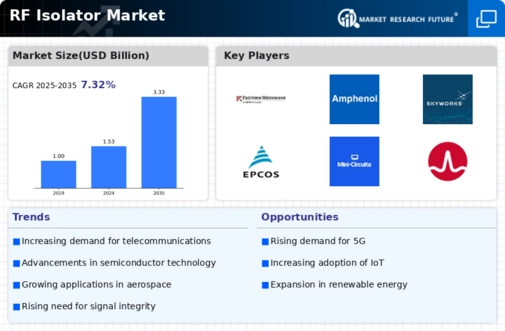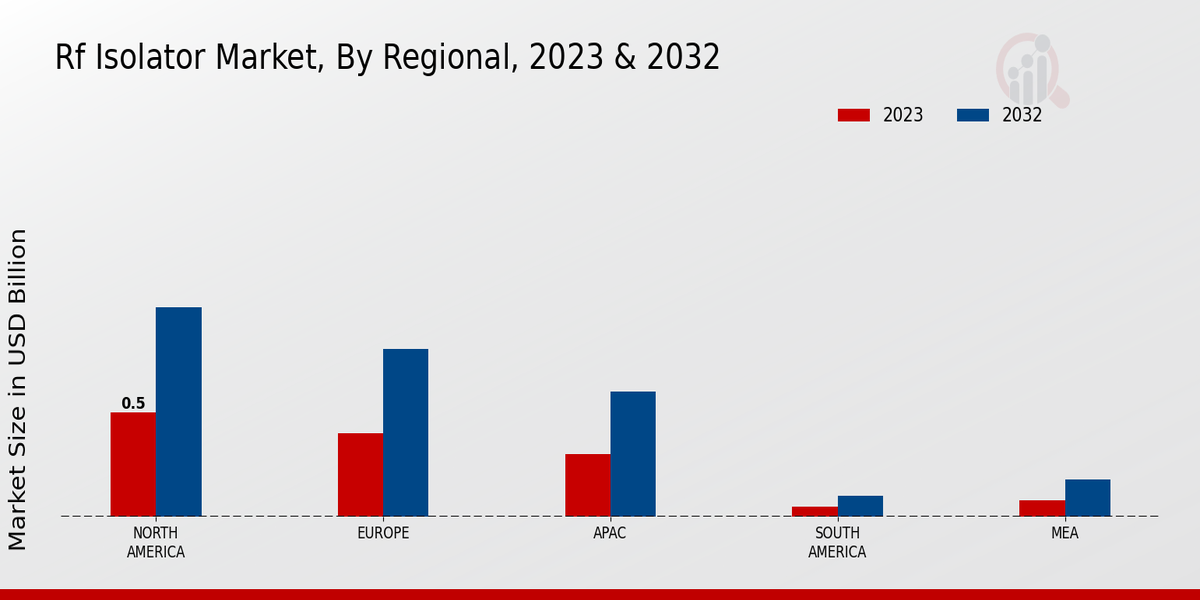The RF Isolator Market has witnessed significant growth due to the increasing demand for efficient RF signal management and robust communication systems. The competitive landscape is characterized by the presence of several key players, each striving to leverage technological advancements and market dynamics to enhance their product offerings. Companies in this sector are focusing on innovation, expanding their product portfolios, and fortifying their market strategies to gain a competitive edge.
As various industries such as telecommunications, aerospace, and defense continue to embrace advanced RF solutions, the competitive insights reveal a landscape marked by strategic partnerships, mergers, and acquisitions as businesses seek to enhance their capabilities and market reach.
Fairview Microwave has established a strong presence in the RF Isolator Market, primarily due to its diverse product range and commitment to high-quality solutions. The company’s strengths lie in its ability to provide a wide array of RF isolators that cater to multiple applications, including defense, telecommunications, and test equipment. This diversity enables Fairview Microwave to serve a broad customer base while also meeting specific industry requirements. Additionally, the company has invested in research and development to stay at the forefront of technological advancements, resulting in innovative products that enhance performance, reliability, and efficiency.
Their focus on customer service and support further solidifies their competitive position, allowing them to respond effectively to market needs and customer demands.API Technologies is another notable player in the RF Isolator Market, known for its extensive expertise in RF and microwave solutions. The company’s strengths include a robust portfolio of high-performance RF isolators designed for a variety of commercial and military applications.
API Technologies emphasizes advanced manufacturing processes and stringent quality control measures, ensuring that its products meet stringent industry standards. The company also leverages its engineering capabilities to deliver customized solutions tailored to specific customer requirements, further enhancing its appeal in the competitive landscape. API Technologies is committed to innovation and is continuously exploring new technologies to optimize its offerings, positioning itself favorably against competitors in the market.


















